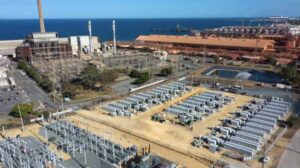The energy policy promises of global governments have the world “well off track” on global climate goals, the International Energy Agency has warned, with no thanks to Australia’s plans to buck the global trend on coal production.
In the Stated Policies Scenario of its latest World Energy Outlook – which aims to “hold up a mirror to today’s plans and illustrate their consequences” – the IEA describes a world in 2040 where CO2 emissions lock in severe impacts from climate change.
If they are to meet the “Sustainable Development” scenarios where global temperatures are kept within the bounds aimed for in the Paris climate treaty, then governments need to do the virtual opposite of what they are doing now – and explicitly encourage investment in wind and solar, energy efficiency, demand management and electric transport.
These conclusions come in the latest WEO, a voluminous 811-page dossier that tracks where the world is going on energy and emissions, and where it should be going. 
Its outlook is bleak because, despite the Paris commitments, the world’s appetite for fossil fuels is projected to stay relatively strong – despite the plummeting cost of renewables and associated storage technologies and the urgent advice of the world’s climate scientists – with demand for coal falling only slightly, and demand for gas rising by 35 per cent.
In the Stated Policies Scenario – which it should be noted is a notch up from the Current Policies Scenario, which assumes a continuation of the status quo – energy demand increases by 1 per cent a year to 2040, with low-carbon sources led by solar PV set to supply more than half of this growth, and natural gas accounting for another third.
 “Oil demand flattens out in the 2030s, and coal use edges lower. Some parts of the energy sector, led by electricity, undergo rapid transformations. Some countries, notably those with ‘net zero’ aspirations, go far in reshaping all aspects of their supply and consumption.”
“Oil demand flattens out in the 2030s, and coal use edges lower. Some parts of the energy sector, led by electricity, undergo rapid transformations. Some countries, notably those with ‘net zero’ aspirations, go far in reshaping all aspects of their supply and consumption.”
Australia, it is noted, is not one of these countries, but rather distinguishes itself as “one of the few major producers” projected to increase its coal production out to 2040, even as domestic demand falls.
“Our projections are consistent with the development of some new mines, although there are large uncertainties over the extent of import demand in Asia and the financing environment for greenfield projects,” the report says.
If Australia’s coal plans look outdated in the Stated Policies Scenario, they look plain stupid under the IEA’s Sustainable Development Scenario, where renewables well and truly dominate by 2040, and coal production plummets by more than 60 per cent compared to today.
In this scenario, low-carbon technologies are projected to provide almost 85 per cent of generation in 2040; mostly from wind and solar PV.
Coal-fired generation “plummets,” the report says, with almost all coal-fired power plants without carbon capture repurposed to provide flexibility, or retired.
Although gas-fired power provides important balancing services, especially to help meet seasonal variability in demand, its use peaks in the mid-2020s as battery storage and demand-side management take on a much larger role in meeting short-term flexibility needs.
So what is needed to gear government policies up to the Sustainable Development Scenario?
For starters, says the IEA, it will require around 20 per cent more investment than in the Stated Policies Scenario, with a “significant reallocation” away from fossil fuels and towards renewables, efficiency and supporting low-carbon technologies.
Indeed, on these graphs above it shows the scale of annual investments needed. Renewables needs to double, and so does investment in efficiency. Investment in fossil fuels needs to slow down dramatically. It clearly has little hope for carbon capture, and nuclear investment is just a fraction of wind and solar.
Investment in electricity grids and batteries would also have to “rise strongly”, in part to accommodate all the wind and solar PV.
Spending on energy efficiency would have to nearly quadruple, by 2040, 45 per cent of which would be put into buildings. Electric vehicles adoption and development will also be important.
Unhappily, none of these things are anywhere on federal policy agenda for Australia, whose current government is too busy denying its climate denial to get on with what needs to be done.











